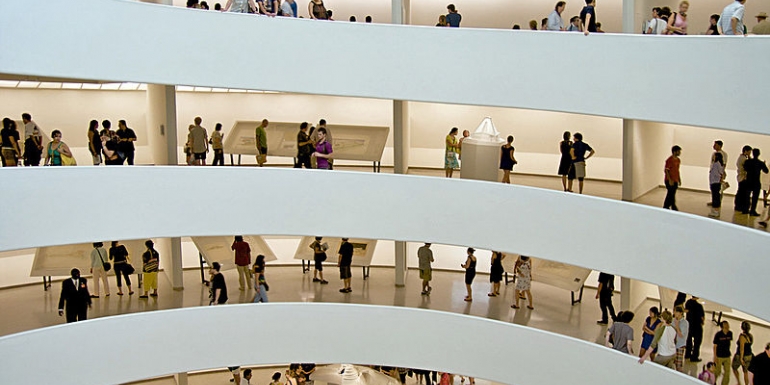If you’ve ever explored a major art museum you’ve probably experienced a number of feelings, depending on your nature. If you’re like me you probably feel joy, awe, and inspiration. If you’re like my twelve-year-old daughter, you might feel boredom, hunger, and exhaustion. In any case, you might also feel a sense of disorientation: have I been in this gallery already? Which way should I go now? This is because most major art museums are housed in old, unlived-in palaces (who could afford to live in one nowadays?) with hundreds of rooms. Even modern, purpose-built museums tend to follow the traditional floor plan, where one room has four passageways, each leading to another room with four passageways, and so on, for acres and acres. There are usually signs or maps to tell you where the Mona Lisa is, but I can’t help but wondering what I might be missing if I go through the door on the left rather than the one on the right. This sense of uncertainty detracts from the overall experience.
This problem was solved in 1959 when Frank Lloyd Wright’s final masterpiece, the Guggenheim Museum, opened in New York City. The building has a unique round shape surrounding a large atrium. You take an elevator to the top and walk in a gentle downward spiral to the main lobby, admiring the art along the way. When you reach the lobby you’ve seen it all. Ingenious!
I wonder why it took so many centuries for someone to come up with this idea. I suppose most people – even creative ones like architects – see patterns and follow them, rather than asking whether it might be better to break the pattern and do something different. There is survival value in following patterns. It is safe to follow the crowd. If you do what everyone else does and make a mistake you will be forgiven. It could have happened to anyone! But if you do something off the wall and screw up, well, you’re fired. What were you thinking? Nobody does that! But what if you do something completely different and it works? You could change the world. Wouldn’t that be great? On the other hand, why take chances….
I’m a big fan of Muhammad Yunus and Grameen Bank. Instead of giving big loans to people who don’t really need the money (like most banks), they give tiny loans of just a couple dollars to poor people who desperately need it. They have changed the world for countless numbers of impoverished families, helping them start viable businesses and become self-sufficient. They have also won a Nobel Prize for their work. Breaking patterns is big business. Just ask Airbnb, Amazon, Apple – and those are just the A’s.
Frank Lloyd Wright, Muhammad Yunus, Elon Musk and other revolutionary leaders are changing the world with their bold ideas and vision. The Revolutionary Leader is the leader of the future. But don’t wait too long, because the future is already here.



